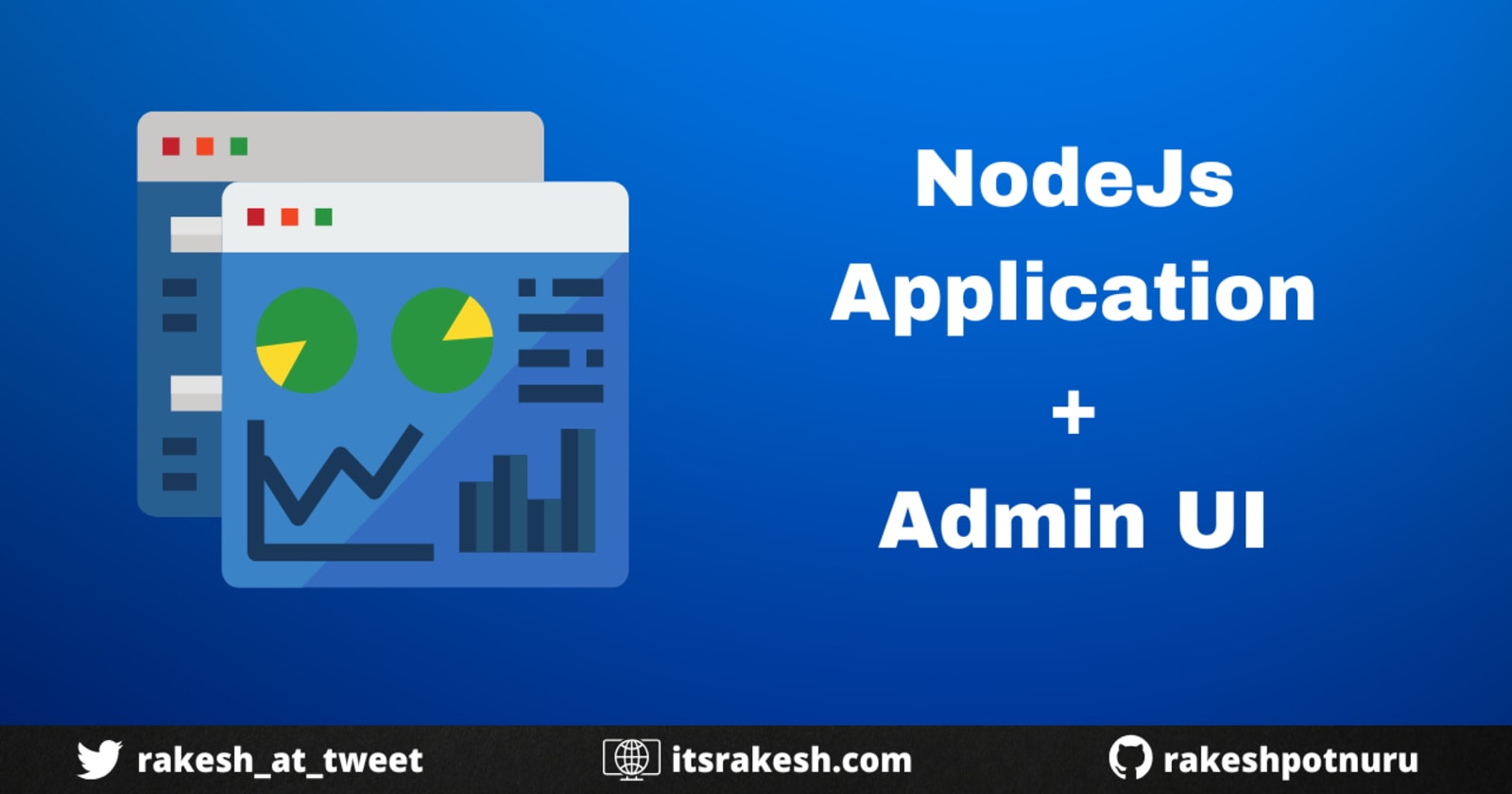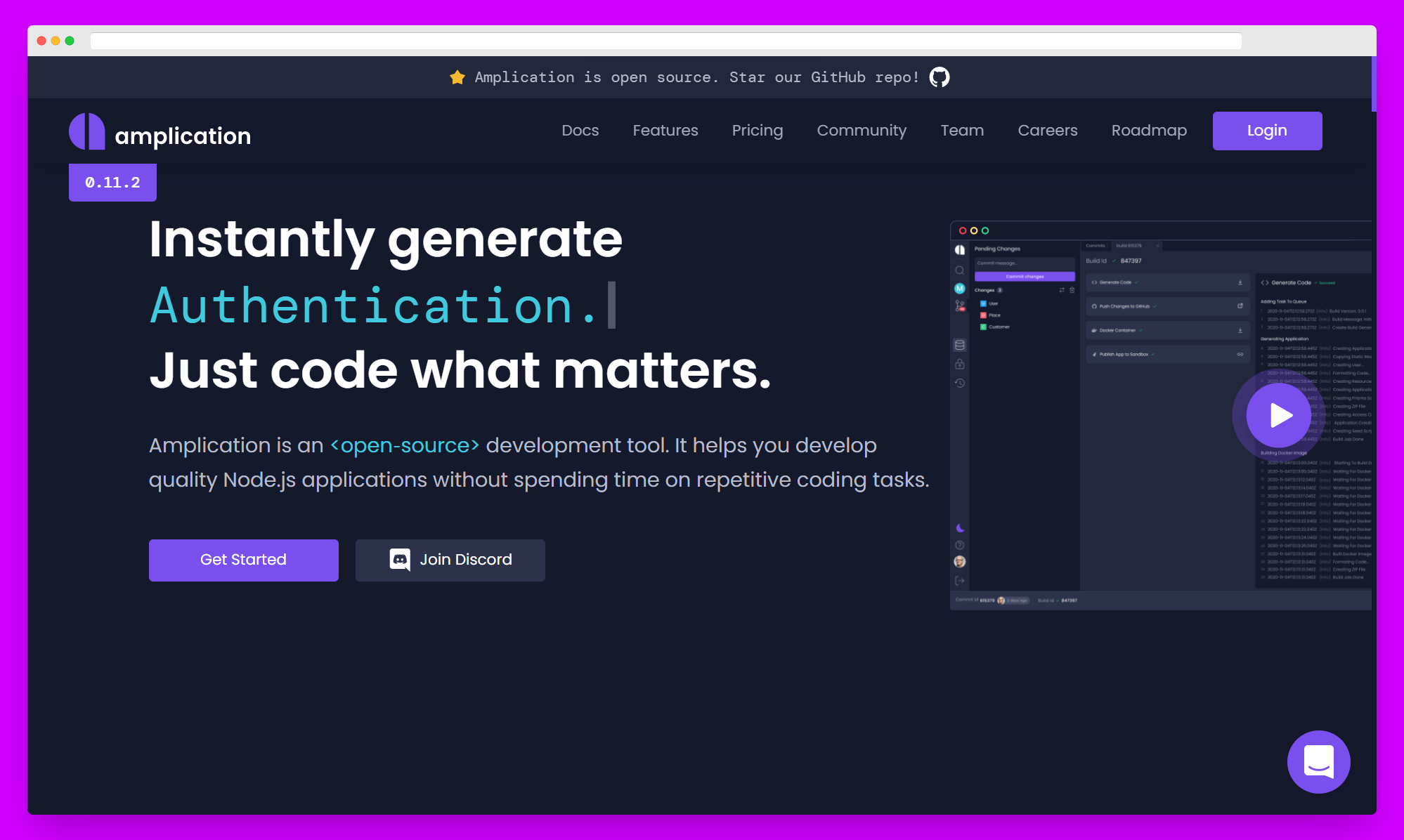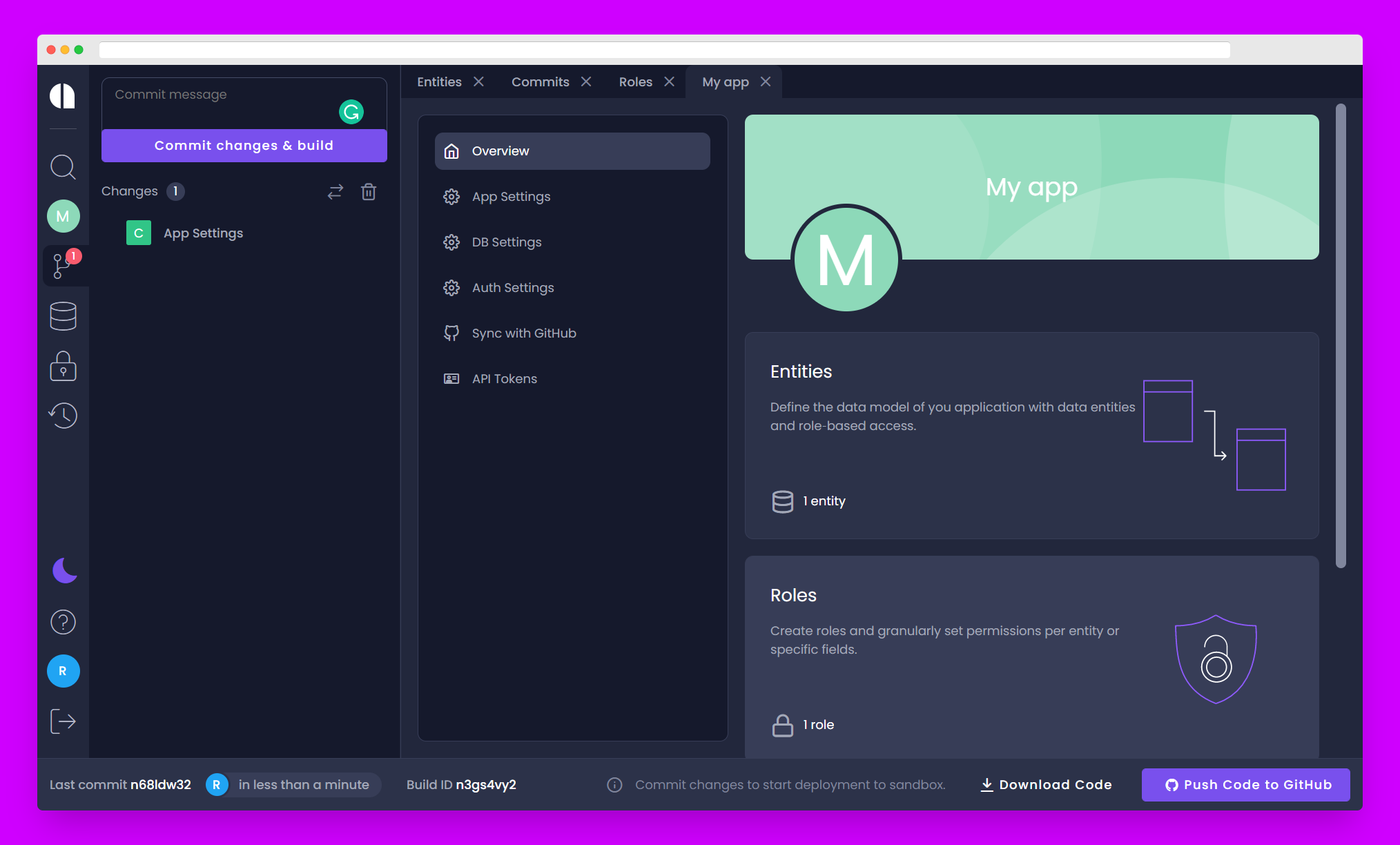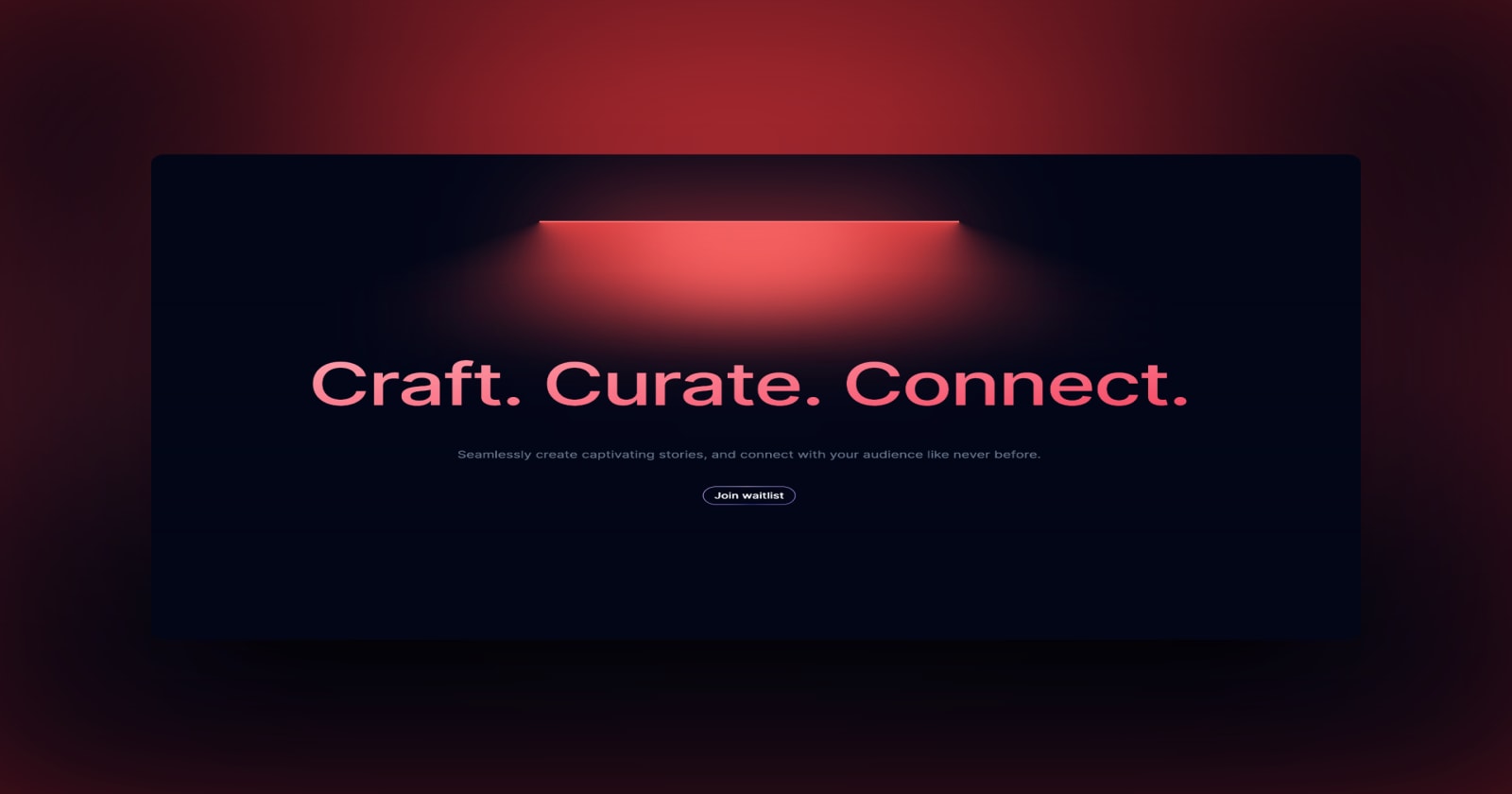
Auto-generate your NodeJs app + ReactJs Admin-UI 😳
Think of building a RESTApi. What do you actually do? Set up a server with Expressjs, configure a database, write models, controllers, and some crud operations, etc. Don't you think you are wasting time writing some boilerplate code? And what about Admin-UI? Is there any logic involved in building an Admin-UI? Now, what if there is a UI tool that generates a Nodejs application with a database along with all those models, CRUD operations, and a great Admin-UI?
Let's get started
And that tool is Amplication
Amplication

Amplication is an open-source low-code tool. Means a completely free-to-use tool. Interestingly, amplication can be used by front-end developers also, using its UI you can just make a few clicks and boom your typescript NodeJs application along with React admin-UI is ready.
Let's see what amplication provides-
- React Admin-UI generated with react-admin.
- NodeJs app with Postgres database, authentication
- Sync with GitHub or download code.
- Sandbox environment to develop and test your app without setting it up locally.
- Docker setup to deploy to the cloud.
- And many more...
Let's start using amplication by creating a project
Prerequisites
- GitHub account
Step 1 - Get Amplication
- Go to amplication.com.
- Signup with GitHub.
Step 2 - Create a new project
-
Click "+ New app".
-
You have three amazing options.
- Generate the app schema according to your data by uploading an excel or CSV file.
- Start from scratch
- Start from a template
-
As we are learning how to use, select "Start from scratch".
Step 3 - Customize app

- Go to app Dashboard,
- App Settings - Change app name, description, color
- DB Settings - Leave them as it is because they can be used for dev purposes only as they are exposed in the generated app.
- Auth Settings - Select which authentication method you want to use.
- Sync with GitHub - Turn this on if you want to automatically push code to your repo.
Step 3 - Create entities
- Go to Entities.
- The app automatically creates an entity called "User". You can't remove this because a user is needed to manage the app like permissions, admin-UI, etc.
- Start creating your own entities by clicking "+ Add entity".
Step 4 - Test the app
- Commit changes.
- Now, you have two options,
- Test your app in a cloud environment with a sandbox that is free and everything will be ready for you. No need to install anything or no need to configure the database.
- Download the code as a zip file or clone it from the GitHub repo and set up everything locally.
Step 5 - Deploy
- Sandbox is only for development purposes with limited resources, so you can't use it for production.
- As amplication provides docker support you can build an image and deploy it to any cloud service.
That's it! Your NodeJs application is ready within minutes. Super simple, right?
⚒️ Tool of the week ⚒️

If you find this useful. And don't forget to give a star to this great tool - github.
LEAVE A COMMENT OR START A DISCUSSION
MORE ARTICLES

3 min read
Introducing Publish Studio: Power Digital Content Creation
Say “Hi” to Publish Studio, a platform I’ve building for the past few months. If you are a content writer, then you should definitely check it out. And if you are someone who has an audience on multiple blogging platforms and need an easy way to manage your content across platforms, then you should 100% give it a try.

10 min read
Let's Build a Full-Stack App with tRPC and Next.js 14
Are you a typescript nerd looking to up your full-stack game? Then this guide is for you. The traditional way to share types of your API endpoints is to generate schemas and share them with the front end or other servers. However, this can be a time-consuming and inefficient process. What if I tell you there's a better way to do this? What if I tell you, you can just write the endpoints and your frontend automatically gets the types?